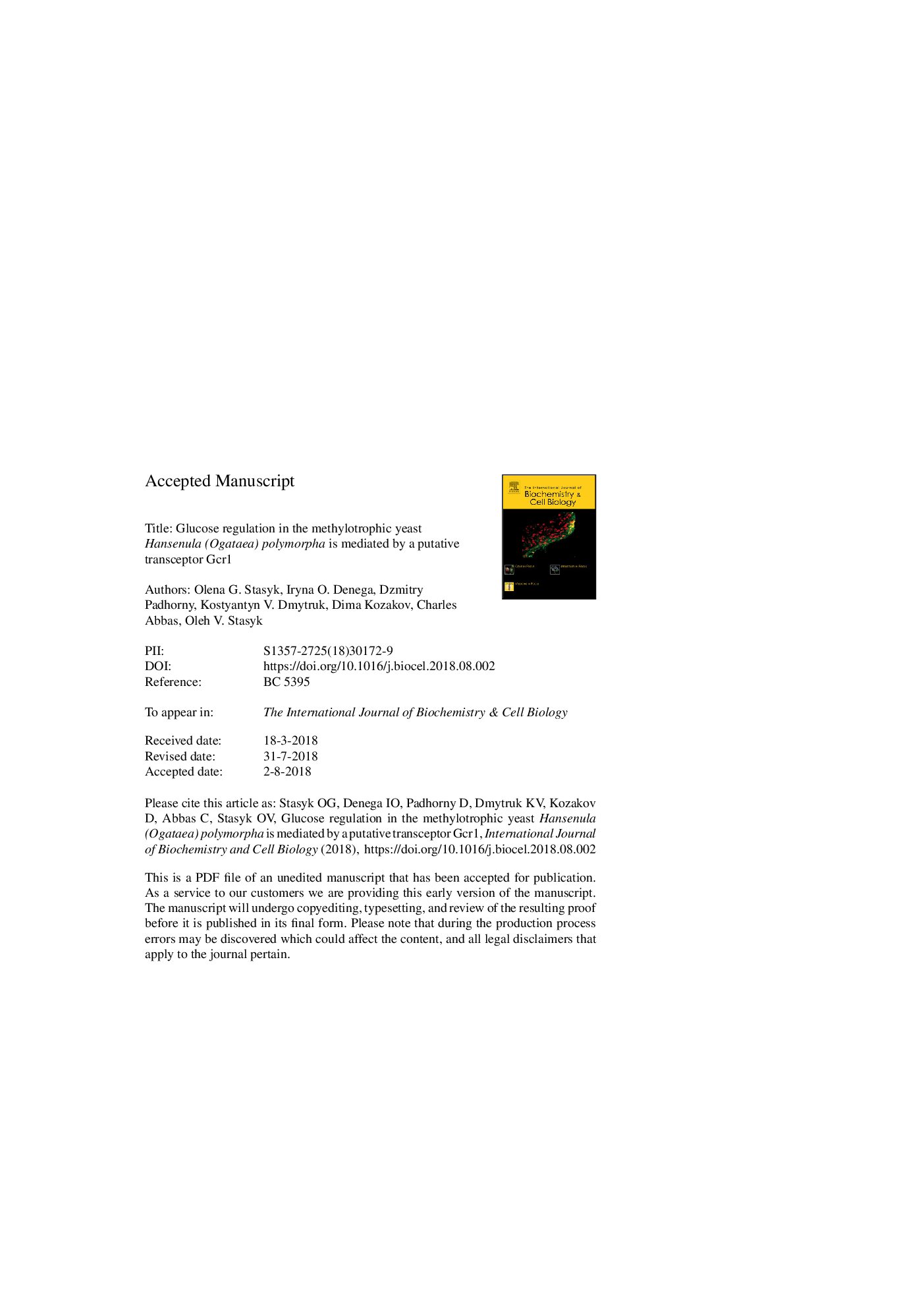| Article ID | Journal | Published Year | Pages | File Type |
|---|---|---|---|---|
| 8321877 | The International Journal of Biochemistry & Cell Biology | 2018 | 40 Pages |
Abstract
The HpGcr1, a hexose transporter homologue from the methylotrophic yeast Hansenula (Ogataea) polymorpha, was previously identified as being involved in glucose repression. Intriguingly, potential HpGcr1 orthologues are found only in the genomes of a few yeasts phylogenetically closely related to H. polymorpha, but are absent in all other yeasts. The other closest HpGcr1 homologues are fungal high-affinity glucose symporters or putative transceptors suggesting a possible HpGcr1 origin due to a specific archaic gene retention or via horizontal gene transfer from Eurotiales fungi. Herein we report that, similarly to other yeast non-transporting glucose sensors, the substitution of the conserved arginine residue converts HpGcr1R165K into a constitutively signaling form. Synthesis of HpGcr1R165K in gcr1Î did not restore glucose transport or repression but instead profoundly impaired growth independent of carbon source used. Simultaneously, gcr1Î was impaired in transcriptional induction of repressible peroxisomal alcohol oxidase and in growth on methanol. Overexpression of the functional transporter HpHxt1 in gcr1Î partially restored growth on glucose and glucose repression but did not rescue impaired growth on methanol. Heterologous expression of HpGcr1 in a Saccharomyces cerevisiae hxt-null strain did not restore glucose uptake due to protein mislocalization. However, HpGcr1 overexpression in H. polymorpha led to increased sensitivity to extracellular 2-deoxyglucose, suggesting HpGcr1 is a functional glucose carrier. The combined data suggest that HpGcr1 represents a novel type of yeast glucose transceptor functioning also in the absence of glucose.
Related Topics
Life Sciences
Biochemistry, Genetics and Molecular Biology
Biochemistry
Authors
Olena G. Stasyk, Iryna O. Denega, Dzmitry Padhorny, Kostyantyn V. Dmytruk, Dima Kozakov, Charles Abbas, Oleh V. Stasyk,
